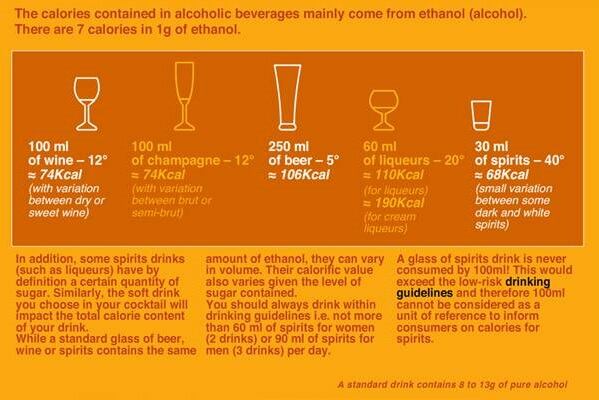It says that, if calorie content per 100ml was used as a standard across Europe, it would be harder for consumers to interpret the content per serving (a British pint of beer is 568ml, whereas a shot of spirit is 30ml).
Spirits would be at a particular disadvantage, it says, because a standard 30ml serving would result in a large figure per 100ml - alarming health conscious consumers.
But The Brewers of Europe - which has committed to providing nutritional information per 100ml - stands by this measure as a logical reference point across all alcoholic and non-alcoholic beverages.
How big is a serving?
The EU’s Food Information to Consumers (FIC) act requires food and beverages to give nutritional and ingredients information to consumers. However, alcoholic beverages (above 1.2% ABV) are currently exempt.
But the last two weeks have seen the industry make moves towards calorie and nutritional labelling on alcoholic drinks.
The Brewers of Europe has committed to providing nutritional information and ingredients listings on beer – a pledge backed by Heineken, Carlsberg, SAB Miller, and AB InBev.
They will provide information per 100ml. This is in line with the EU’s FIC act, so that consumers can compare like-for-like facts with both alcoholic and non-alcoholic beverages.
But Paul Skehan, director general, Spirits Europe, told BeverageDaily.com a measure of 100ml across the board would create misleading values for spirits, as a serving size is much lower (30ml).
“100ml might be appropriate for beers, since they are normally consumed in serving quantities greater than that – 250ml, 330ml, 500ml and even 1000ml servings,” he said.
“But 100ml is not appropriate for all drinks, especially for spirits, where the single serving might contain 30ml of single malt, VSOP cognac, or London gin.
“Imagine a consumer in a bar, deciding what to drink – a consumer who is concerned about the number of calories he is consuming. The information he needs is linked to the normal choices in front of him: a glass of wine, a pint or half pint of beer, or a dram of whisky.
“Of those choices, the beer option will contain most calories because of the volume of beer to be consumed. A 100ml reference point makes a nonsense of that reality, and will confuse consumers into thinking the beer will have fewer calories than the wine or shot of spirit.”
In fact, an 100ml serving would exceed drinking guidelines (60ml spirits for women and 90ml spirits for men) and is therefore is a nonsensical unit of reference, Skehan added.
Spirits Europe says it welcomes efforts to promote responsible, moderate consumption. But Skehan wants to see an open dialogue to assess the most appropriate method of presenting information.
“However, at present, we only hear of one option and that is per serving of 100ml,” he said.

Storm in a shot glass?
But the Brewers of Europe says its reference point of 100ml stands in line with FIC regulation. It adds it is mandatory for producers who provide nutritional information to follow the rules of FIC and give values per 100ml (even if the commitment to provide such information is voluntary).
Pierre-Olivier Bergeron, secretary general of The Brewers of Europe, agreed that 100ml is not a common serving size for any drink, alcoholic or non-alcoholic. But he defended the 100ml point of reference as one that is "logical and has been understood by consumers for years."
There is nothing to prevent beverage companies from providing both serving sizes and the 100ml reference point, he added.
"It's a storm in a teacup - or should I say shot glass," he added.
Unnecessary costs?
Public health MEPs (Members of European Parliament) yesterday called for mandatory calorie content labelling on alcoholic drinks across the continent, in an effort to give consumers more information about what they are drinking.
Paul Skehan of Spirits Europe suggests an estimate per serving size would help consumers understand calorie content – something he says the industry is already doing. But he fears that regulation could harm some spirit brands without gain to the consumer.
“Any changes to labels incurs costs, and typically those costs are borne disproportionately by smaller companies and distilleries,” he said. “In addition, nutritional information for spirits may require investment in labs to make sure the information is always 100% accurate. Again, this will be an extra cost and burden for the smaller distilleries across Europe.
“Rather than an exact figure, a good estimate per serving size communicated through modern, appealing information channels could serve the purpose of helping consumers to monitor their calorie intake while limiting the burden and liability of producers.
“There are good examples already out there such as the www.drinkaware.co.uk website attracting millions of visitors. This provides information comparing alcoholic beverages with other foodstuffs. This is one option: with apps, QR codes, etc, more could be done.”
Diageo (which produces spirits as well as wine and beer) has announced it will include nutritional and alcohol content information on its drinks worldwide, using a typical serve as its point of reference.
